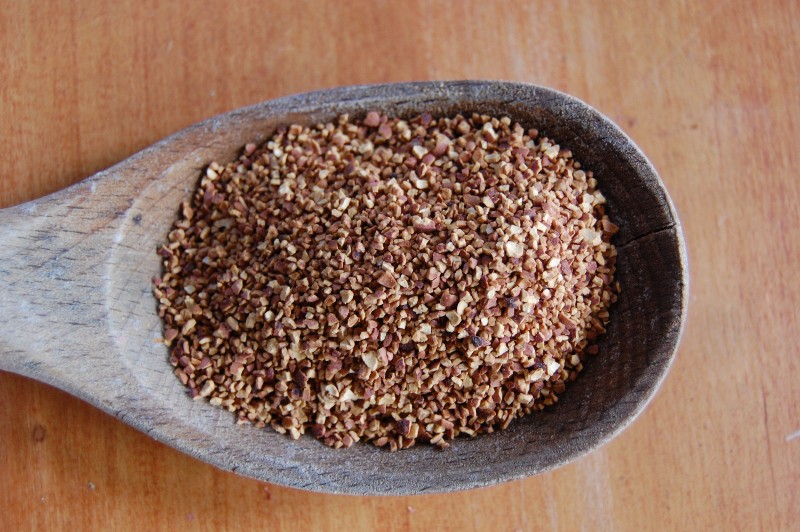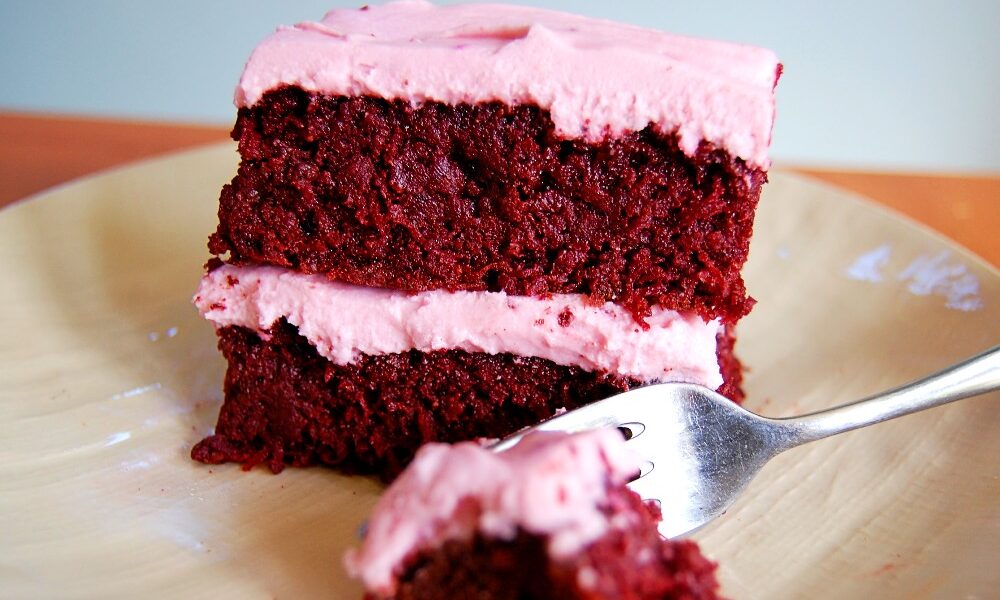
Wild Red Velvet Cake
Ingredients
Cake
- 3 large beets to get 1.5 cups grated raw beets
- 1/2 cup cherry pit flour
- 1/2 cup all-purpose flour
- 1/2 cup acorn flour or sub all-purpose flour
- 1.5 tsp baking powder
- 1 tsp salt
- 1 cup sugar
- 1/2 cup neutral oil
- 3 large eggs
Frosting
- 8 oz cream cheese room temp
- 1/2 cup salted butter room temp
- 2.5 cups powdered sugar
- 1 Tbsp beet juice
- 1 tsp lemon juice
Instructions
- Peel your beets and grate on a small grater until you have about 1.5 cups. Transfer to a colander and press with the back of a large spoon or squeeze with your hands to remove most of the juice from the beets. Save this juice to color your icing!
- In a large bowl, whisk together the eggs, sugar and oil until smooth.
- Sift the flours into a separate bowl and add the baking powder, sugar and salt. Stir until combined.
- Whisk the dry mixture into the wet mixture, then stir in the grated beets. Take a moment to admire the amazingly vibrant pink color beets produce.
- Pour the batter into a greased 9-inch baking dish and bake at 350 degrees Fahrenheit for 25-35 minutes, or until a knife or toothpick inserted in the center comes out clean. Let cool while you make your icing.
For the Frosting
- Beat together the cream cheese and butter in a stand mixer until smooth and fluffy.
- While the mixer is running, gradually add the powdered sugar until well incorporated.
- Mix together the beet and lemon juice and add to the frosting, then spread on your cake once it has cooled slightly.
Wild Red Velvet Cake with Cherry Pit Flour
Wild cherries are one of our favorite fruits to forage and eat, but depending on the species they can have a somewhat sad fruit-to-pit ratio. Thankfully, you can turn those pits into another delicious ingredient. Using cherry pits as a flour and flavoring agent is a tradition in Native American, Middle Eastern, and Siberian cuisine. In Syria and other nearby countries, an ingredient called mahlab is made from the ground kernels inside cherry pits and used to contribute an almond-like flavor to baked goods. Being familiar with this ingredient from making cookies with Jordan’s family is what drove our curiosity to use this unlikely part of the fruit. You may have heard while eating an apple as a child that the seeds of many stone fruit have cyanide in them. In fact, the seeds of fruit such as apples, cherries, peaches and apricots contain a compound called amygdalin that is converted to cyanide by our bodies when ingested. Luckily, by heating the cherry kernels the amygdalin is denatured and no longer dangerous. So you can grind up the pits to use in baking and feel confident you won’t be poisoning anyone as long as you don’t go sampling the raw batter. If you’d like to be extra cautious, heat the cherry pits in an oven to at least 300 degrees Fahrenheit for ten minutes before grinding them into flour.
For this cake, we used the entire pit including any dried pulp left from the fruit, making it most similar to “Siberian bird cherry flour,” which uses the entire, very small fruit of a wild cherry native to the region. To make mahlab, you would grind only the tiny kernel inside the pit, resulting in a more strongly almond-flavored powder but also requiring a lot more work. This way, we were able to get enough flour to make a cake out of about 1.5 cups of dried cherry pits. After blending the pits in a high-powered blender, we sifted it through a fine mesh strainer to remove any bits too large to use as flour (but save these to infuse in vodka for a DIY almond extract!). The rest of the cake came together easily with grated beets for moisture and color. The end result was delicious and tasted remarkably similar to red velvet cake due to the nutty, slightly bitter, cocoa-like flavor of the cherry pit flour.


